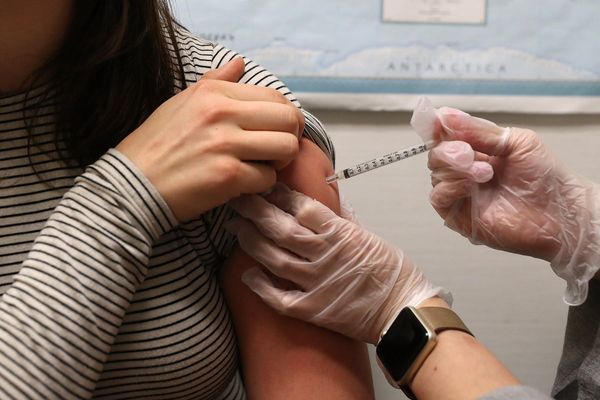
Fevers are a common part of childhood. Sometimes they’re harmless, just the body’s way of fighting off a mild infection. But every parent knows that not all fevers are created equal. The tricky part is figuring out when a fever is something to monitor—and when it signals something more serious. Knowing when a fever isn’t just a fever could make all the difference in keeping your child safe and healthy.
1. Fever Lasts More Than Three Days
It’s normal for a fever to hang around for a day or two during a viral illness. But if it lingers beyond the three-day mark, that’s one of the clearest signs that a fever isn’t just a fever. It may point to something that needs medical attention, like a bacterial infection or complications from an untreated illness. A doctor may want to run tests to rule out infections like pneumonia, urinary tract infections, or even something more complex. The longer the fever sticks around, the more important it is to get answers.
2. Trouble Breathing or Rapid Breathing
If your child’s breathing seems labored or unusually fast during a fever, it’s time to act quickly. This is one of the red flags that parents should never ignore. Difficulty breathing could indicate a respiratory infection like RSV, bronchitis, or pneumonia, all of which may need immediate treatment. Count your child’s breaths per minute and observe whether their chest is retracting or if they’re using extra muscles to breathe. When breathing becomes hard work, the fever isn’t just a fever—it’s a warning sign.
3. Unusual Rash Appears
Some rashes are harmless, but others can point to serious infections, especially when they accompany a fever. If the rash doesn’t fade under pressure (try the glass test), looks purple or bruise-like, or spreads quickly, call your child’s doctor right away. A fever with a concerning rash could signal conditions like meningococcemia, which require urgent care. It’s essential to remember that some illnesses cause visible clues on the skin, and a rash can be a major red flag. In these cases, the fever isn’t just a fever—it’s a symptom of something potentially dangerous.
4. Child Is Lethargic or Unresponsive
All kids get tired when they’re sick, but there’s a difference between being sleepy and being difficult to wake up. If your child is unusually drowsy, won’t respond to you, or can’t stay awake for more than a few seconds, don’t wait it out. Lethargy and unresponsiveness paired with a fever can signal serious neurological concerns or dehydration. Trust your instincts—if your child seems “off,” it’s worth getting them checked out. Lethargy is one of the strongest signs that a fever isn’t just a fever.
5. Severe Headache or Stiff Neck
Older children may complain of a splitting headache, while younger ones might show discomfort by crying when you touch their head or neck. When paired with fever, these symptoms could suggest meningitis, an inflammation of the brain and spinal cord lining. Stiffness, especially if your child won’t look down or turn their head, needs medical evaluation immediately. These symptoms should not be brushed off as part of a regular illness. A severe headache means the fever isn’t just a fever—it may be part of a much more serious condition.
6. Vomiting or Refusing to Drink Fluids
It’s common for kids to lose their appetite when they’re sick, but total refusal to drink fluids or persistent vomiting can lead to rapid dehydration. Dehydration makes fevers more dangerous and harder for the body to manage. Watch for signs like dry lips, sunken eyes, and fewer wet diapers or bathroom trips. If you can’t keep your child hydrated, it’s time to call the doctor. A fever that keeps your child from drinking is not just a fever—it’s a potential health spiral.
7. Seizures During the Fever
Febrile seizures can happen in young children, often during a rapid rise in temperature. While they’re typically not dangerous on their own, the first time it happens is terrifying. If your child has a seizure, lay them on their side, don’t put anything in their mouth, and time the episode. Seek emergency care if the seizure lasts more than five minutes or your child doesn’t recover quickly. A seizure, even if it’s caused by a fever, means the fever isn’t just a fever—it’s affecting the brain and demands attention.
Knowing When to Worry Can Keep Kids Safe
Every child gets sick, and every fever isn’t a disaster. But being able to recognize when a fever isn’t just a fever can help you respond quickly and appropriately. These red flags are your cue to take the next step—whether it’s calling the pediatrician or heading to urgent care. Your intuition and awareness are powerful tools when it comes to your child’s health. Don’t hesitate to ask questions or push for answers when something doesn’t feel right.
Have you ever had to act fast when a fever turned out to be something more serious? Share your experience in the comments—your story might help another parent stay alert.
Read More:
5 Rare Childhood Diseases That Are More Common Than You Think
The Most Overlooked Illness in Children—And It’s Getting Worse
The post When a Fever Isn’t Just a Fever: 7 Red Flags Every Parent Should Know appeared first on Kids Ain't Cheap.







